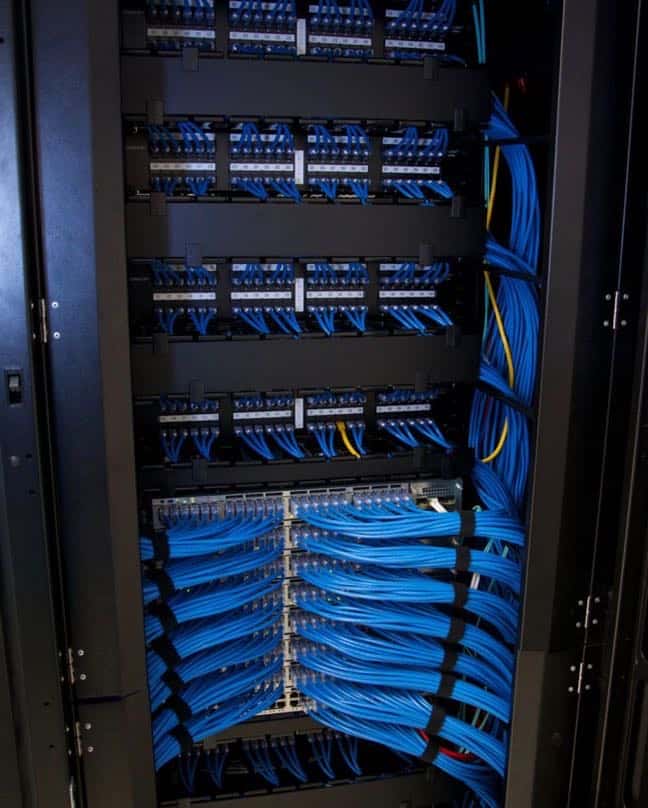Here’s a breakdown of what’s typically involved in Network Cabling Installations
- Planning: This stage involves assessing the network requirements, such as the number of devices to be connected, the layout of the building, and any specific needs or constraints. Planning also includes determining the type of cables to be used (e.g., Ethernet, fiber optic) and the optimal routing for them.
- Design: Based on the planning stage, a detailed design is created specifying the locations of network equipment, cable paths, and any necessary networking hardware such as switches, routers, and patch panels. This design ensures efficient connectivity and scalability for future expansion.
Efficient network cabling installations: where connectivity meets reliability.

- Cable Installation: This step involves physically laying down the cables according to the design plan. It includes tasks such as running cables through walls, ceilings, and floors, installing cable trays or conduits for organized routing, and terminating cables with appropriate connectors.
- Testing and Certification: Once the cables are installed, they need to be tested to ensure they meet industry standards for performance and reliability. This involves using specialized testing equipment to measure parameters like signal strength, bandwidth, and attenuation. Certification ensures that the network infrastructure will perform as expected and can support the desired data speeds.
- Documentation: Proper documentation of the network cabling installation is essential for future maintenance, troubleshooting, and expansion. This includes recording cable locations, termination points, labeling cables and ports, and creating as-built diagrams reflecting any deviations from the original design.
- Maintenance and Support: Regular maintenance and support are necessary to keep the network running smoothly. This includes tasks like periodic inspections, troubleshooting connectivity issues, replacing damaged cables or connectors, and updating documentation as changes are made to the network infrastructure.
- Compliance: Ensuring compliance with relevant regulations and standards, such as those set by organizations like the Telecommunications Industry Association (TIA) or the International Organization for Standardization (ISO), is crucial for quality and safety.
- Security Considerations: Implementing security measures to protect the network infrastructure from unauthorized access, data breaches, and cyber threats is essential. This may involve techniques like encryption, access control, and intrusion detection/prevention systems.

Overall, proper network cabling installations are foundational to the reliability, performance, and security of modern communication networks. Hiring experienced professionals and following best practices throughout the process can help ensure success.
Trusted Partners
Quantum Communications prides itself on aligning with the world’s leading technology partners as a means of providing the highest level of quality and service to our end users.

























